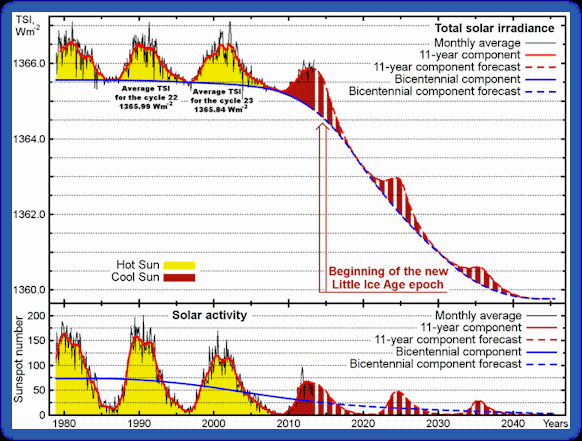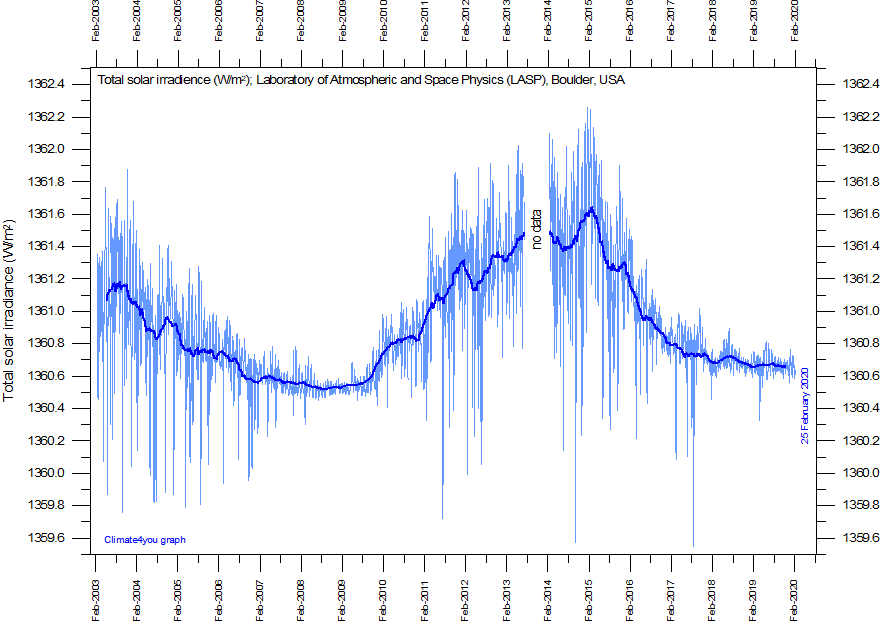Post by missouriboy on Oct 27, 2018 15:24:57 GMT
Sooner or later we will need this thread. As predictions and possibilities are starting to pop up, we might as well start accumulating them. Dr Isvalgaard has made his prediction for an SC25 that is similar or slightly larger than SC24 (I will post as I find it again). James A. Marusek published his forecast for SC25 on WUWT in February of this year. You will remember him as the author of "A
Chronological
Listing
of
Early Weather Events" (http://www.breadandbutterscience.com/Weather.pdf) as well as other research on: www.breadandbutterscience.com/. He casts his SC25 forecast in conjunction with our departing SC24 as a possible repeat of the Dalton Minimum and dresses it up with extracts of winter weather events documented from the 1806-07 to 1814-15 minimum between the first two low cycles of that period, which he forecasts may be similar to a long minimum between SC24 and 25. The article is here: wattsupwiththat.com/2018/02/09/forecast-for-solar-cycle-25/ The comments are entertaining.
In my opinion, the most interesting part of the upcoming solar cycle is the period of minimal sunspotsÅ rather than the period of maximum sunspots because the minimum represents the extreme, the primary actor that foreshadows weather events. When I compared this upcoming period of minimal sunspots with the corresponding period of minimal sunspots during the Dalton Minimum (between solar cycle 5 and 6), I made the following predictive observation. The upcoming period of minimal sunspots will extend from the winter of 2016/17 to the winter of 2024/25. This period is analogous to the similar Dalton Minimum timeframe from the winter of 1806/07 to the winter of 1814/15.
I predict this upcoming period of minimal sunspots shall be longer and deeper than the last one. The changes during this solar minimum shall be more pronounced than during the last solar minimum. These parameters include sunspot numbers, Average Magnetic Planetary Index (Ap index), Galactic Cosmic Rays (GCRs) flux rates, heliosphere volume, the sun’s interplanetary magnetic field strength, solar wind pressure, solar Ultra Violet (UV) flux rate, Earth’s thermosphere volume, solar radio flux per unit frequency at a wavelength of 10.7 cm, and the latitude of Noctilucent Clouds (NLC) sightings.
In my opinion, the most interesting part of the upcoming solar cycle is the period of minimal sunspotsÅ rather than the period of maximum sunspots because the minimum represents the extreme, the primary actor that foreshadows weather events. When I compared this upcoming period of minimal sunspots with the corresponding period of minimal sunspots during the Dalton Minimum (between solar cycle 5 and 6), I made the following predictive observation. The upcoming period of minimal sunspots will extend from the winter of 2016/17 to the winter of 2024/25. This period is analogous to the similar Dalton Minimum timeframe from the winter of 1806/07 to the winter of 1814/15.
I predict this upcoming period of minimal sunspots shall be longer and deeper than the last one. The changes during this solar minimum shall be more pronounced than during the last solar minimum. These parameters include sunspot numbers, Average Magnetic Planetary Index (Ap index), Galactic Cosmic Rays (GCRs) flux rates, heliosphere volume, the sun’s interplanetary magnetic field strength, solar wind pressure, solar Ultra Violet (UV) flux rate, Earth’s thermosphere volume, solar radio flux per unit frequency at a wavelength of 10.7 cm, and the latitude of Noctilucent Clouds (NLC) sightings.






